Marten River Provincial Park
Marten River, ON P0H 1T0
[two_third_last][/two_third_last]
Within the Marten River Provincial Park boundaries is an interesting reconstructed winter logging camp. These were quite common throughout the Temagami region starting in the 1920s.

For guided tours and to see the insides of the buildings you should go during the few designated tour hours. We went on an evening that was lightly raining so we didn’t get to go inside almost any of the buildings. Fortunately for us there were signs with information about different equipment and buildings on the site.
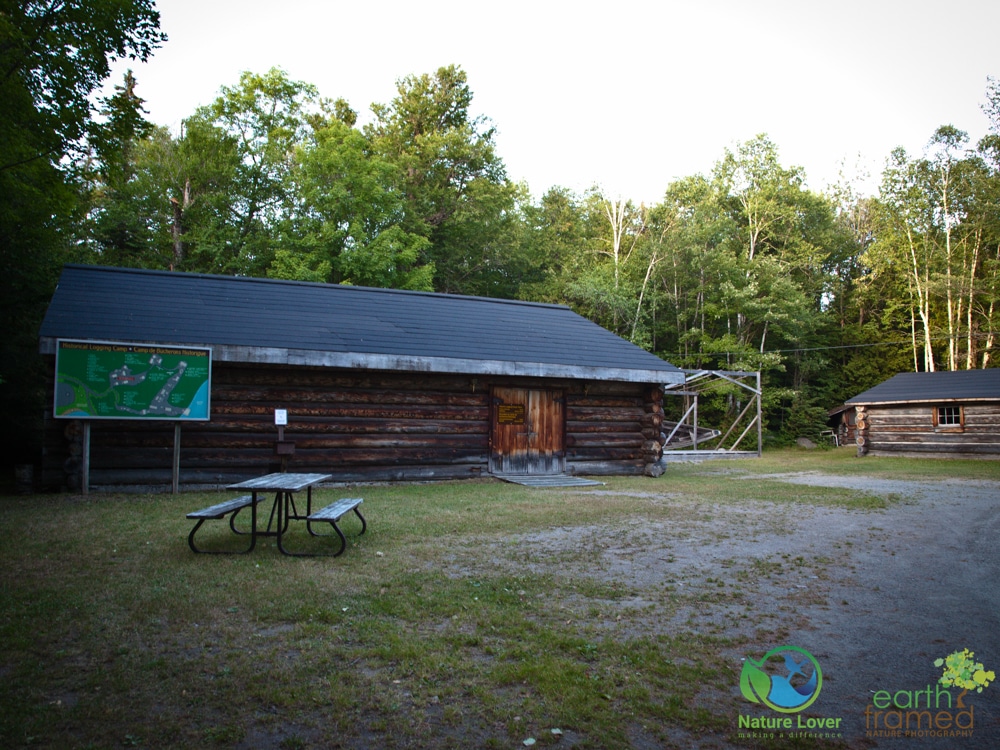
This is the first and main building of the site. You can see the map off to the left. This is the Orientation Centre where you would meet to start one of the tours.
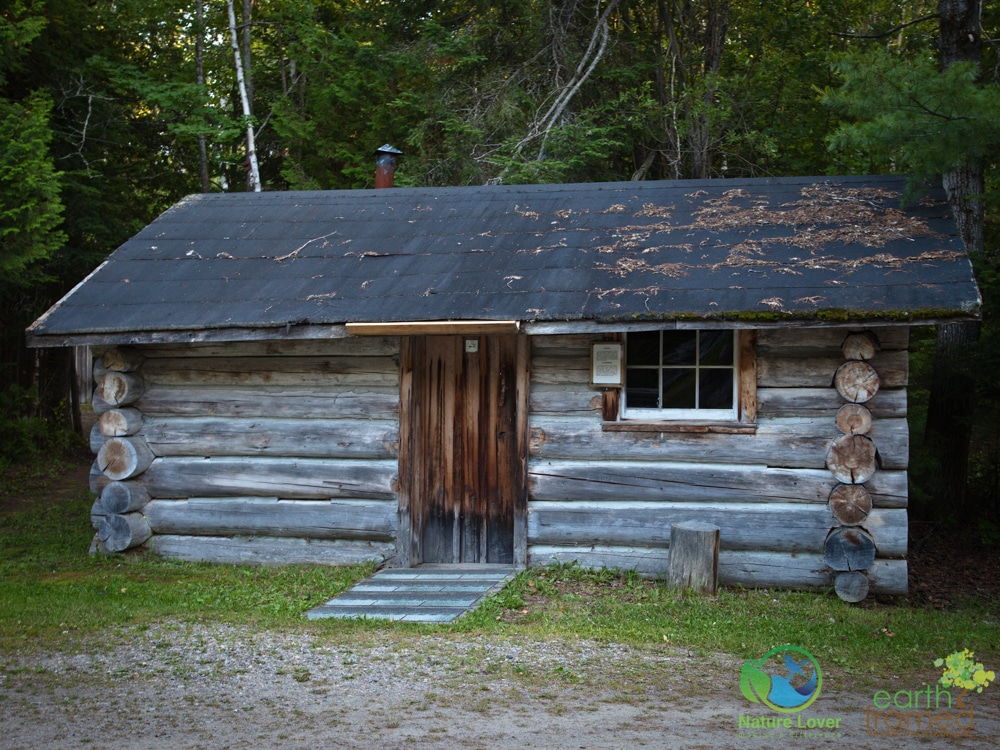
Across from the Orientation Centre is the logging camp’s Office building. This is where loggers would sign in and the clerk would give them a bed roll and a mattress cover (called a ‘tick’).
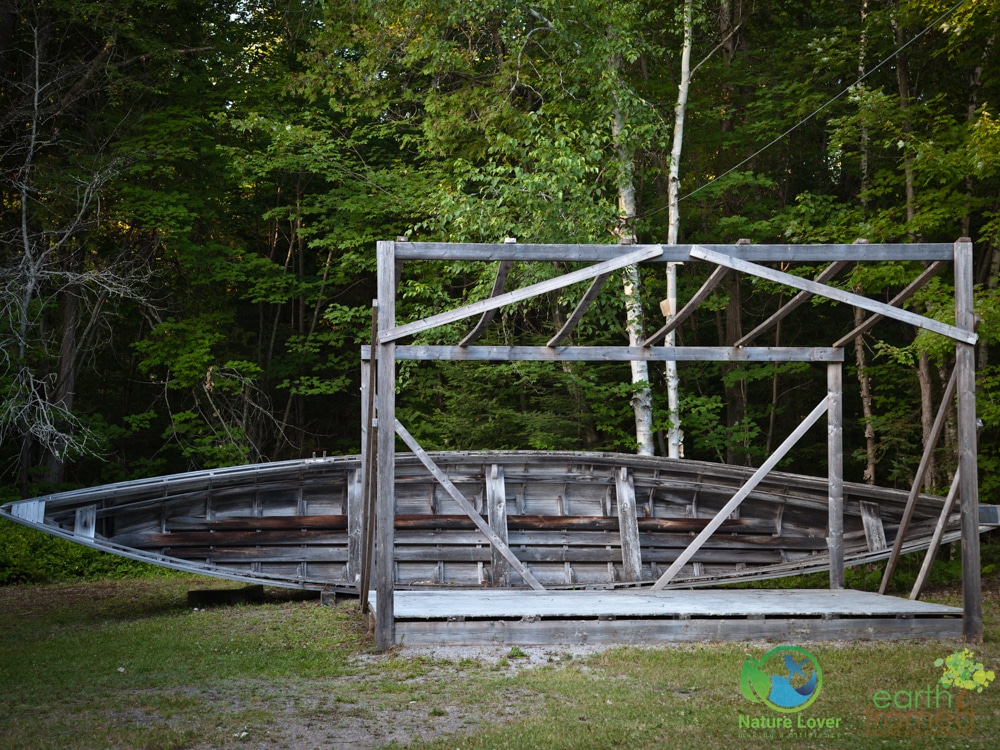
I believe this is one of their logging canoes that they may have used in the river once the logs are moved there.
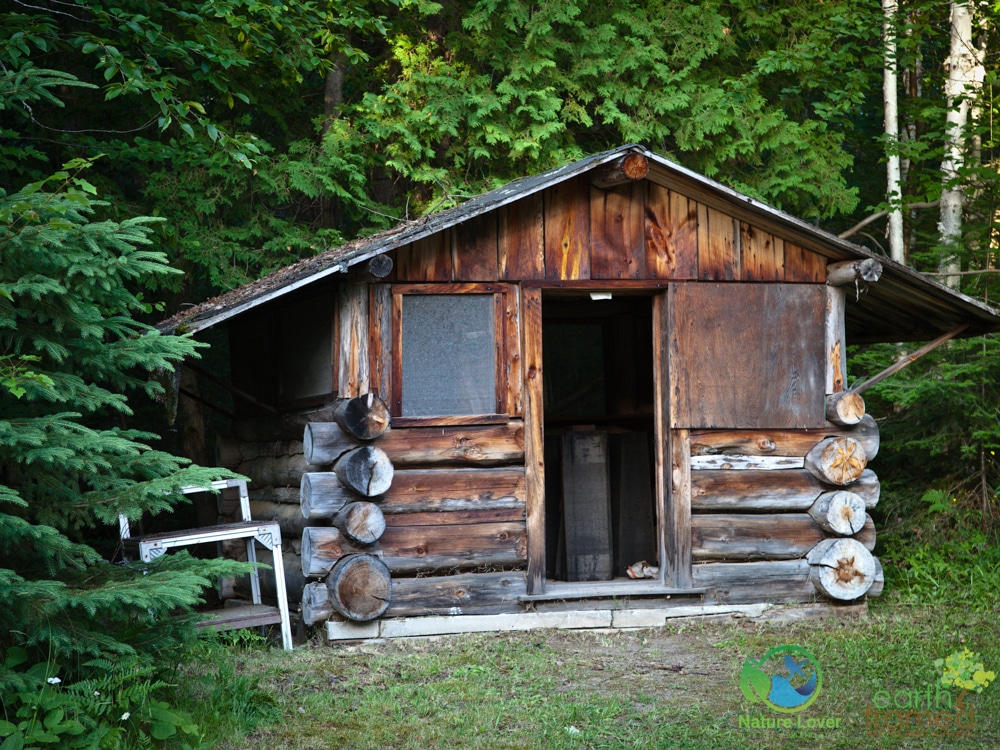
This was one of the few buildings that was actually opened, although I’m not sure it was suppose to be. This is the meathouse.

The inside of the meathouse had this round stove in it (at least I think it’s a stove). This building didn’t seem like it was set up as part of the camp demonstration.

Bet you can guess, by the big hanging triangle, what this building was. It’s was the Cookery. This building could hold 100 people. There would be a cook, two cookees and a bull cook (which was basically a choreboy) working in this building. Depending on the skills of the cook and the supplies he might have on hand, the food could be good or not so great. Some of the types of food that may have been served would have been salt pork, sow belly, corned beef, fresh beef, wheat bread, cornmeal, oatmeal, baked beans, and a variety or root vegetables. They might have also had raisin, prune, apple, squash, mincemeat or rhubarb pie.
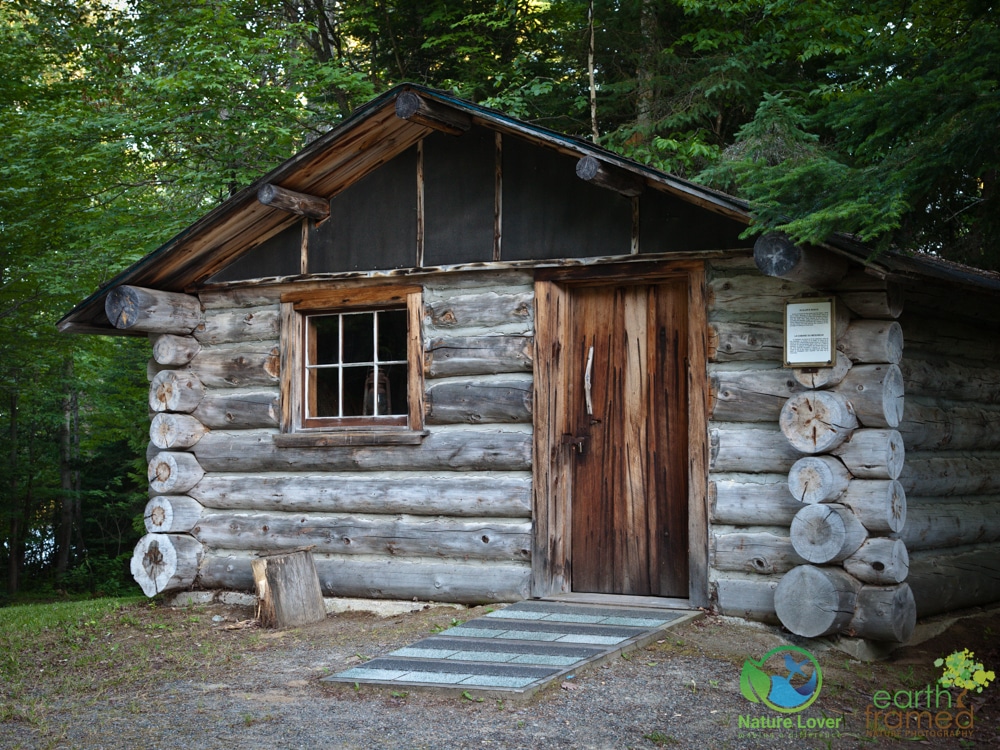
Next was the Scaler’s Shack. These were government workers who recorded the diametre, length and species of every log. These measurements were used to figure out the dues that would be paid by the logging company to the government since the trees were cut from Crown Land. These two fellows wouldn’t have been very popular with the loggers and that is why they had their own quarters instead of sleeping in the bunkhouse.
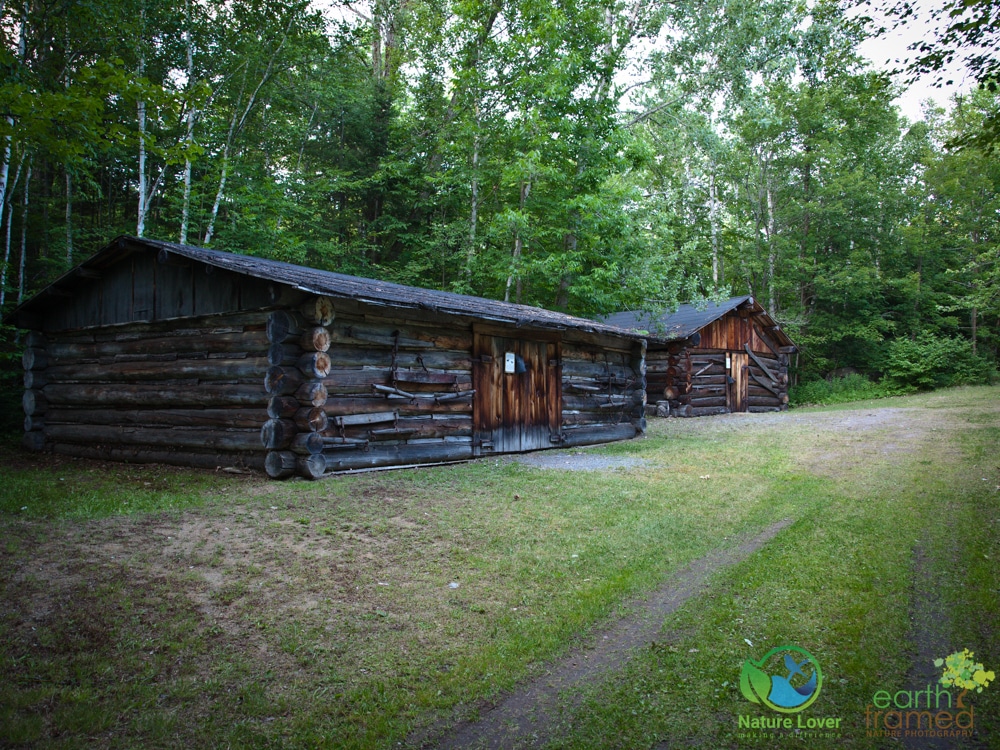
Here you can see the Horse Stable and the Hay Shed. These logging camps would have started with oxen but moved to large breed working horses, like Belgians and Percherons. These types of horses could weigh around 725 kg (1600lbs), or more, and pull tremendous loads.
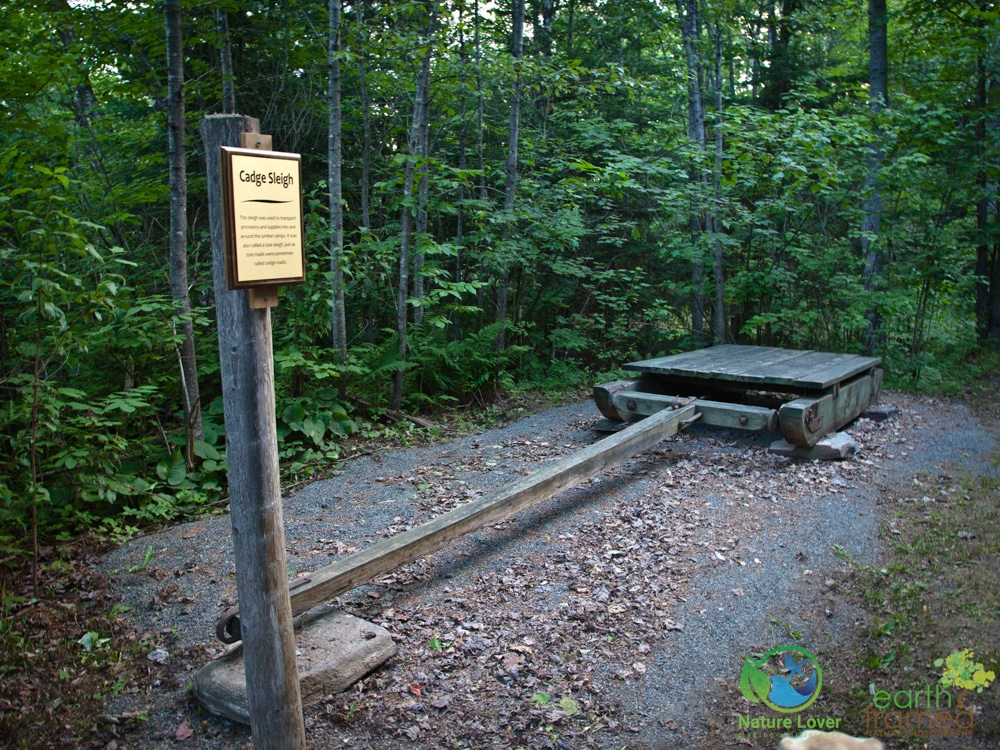
This is a sled that would have been used in the winter with a two horse team.
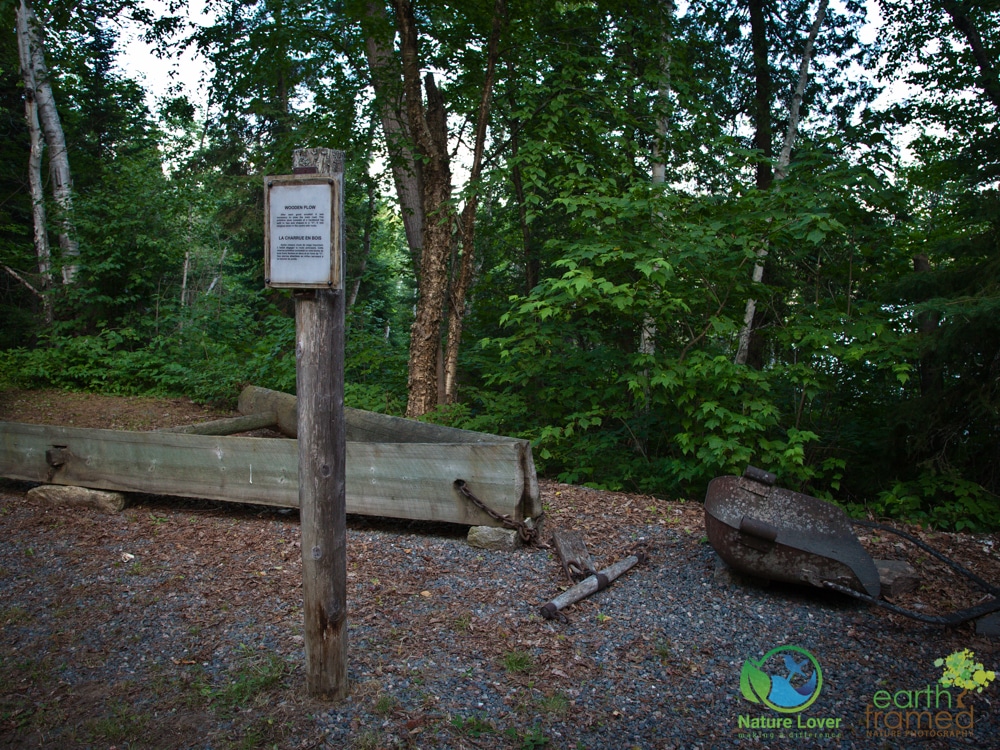
This wooden plow would have been used to clear the main road after any significant snowfall. It was weighed down in the middle with rocks.
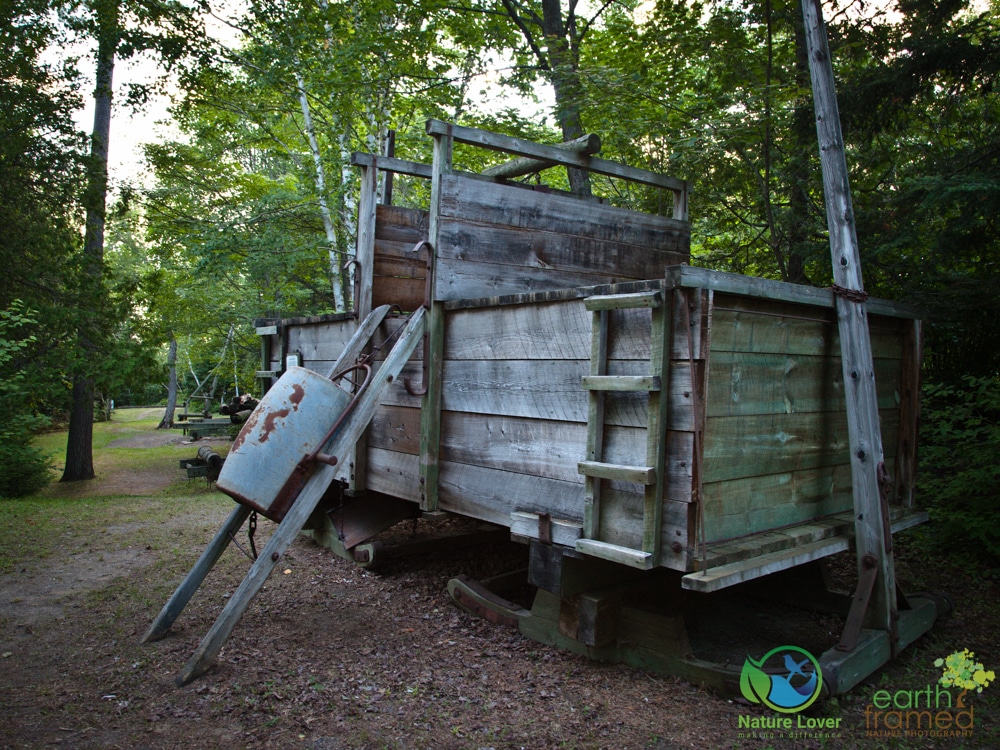
I would call this a form of ice (re)surfacer, not a water tanker as they called it. After the wooden plow was used to clear the main road, this was used to coat the road with a thin layer of ice to reduce friction for the sleds. This work was done by a team of workers almost exclusively at night to avoid interrupting operations.
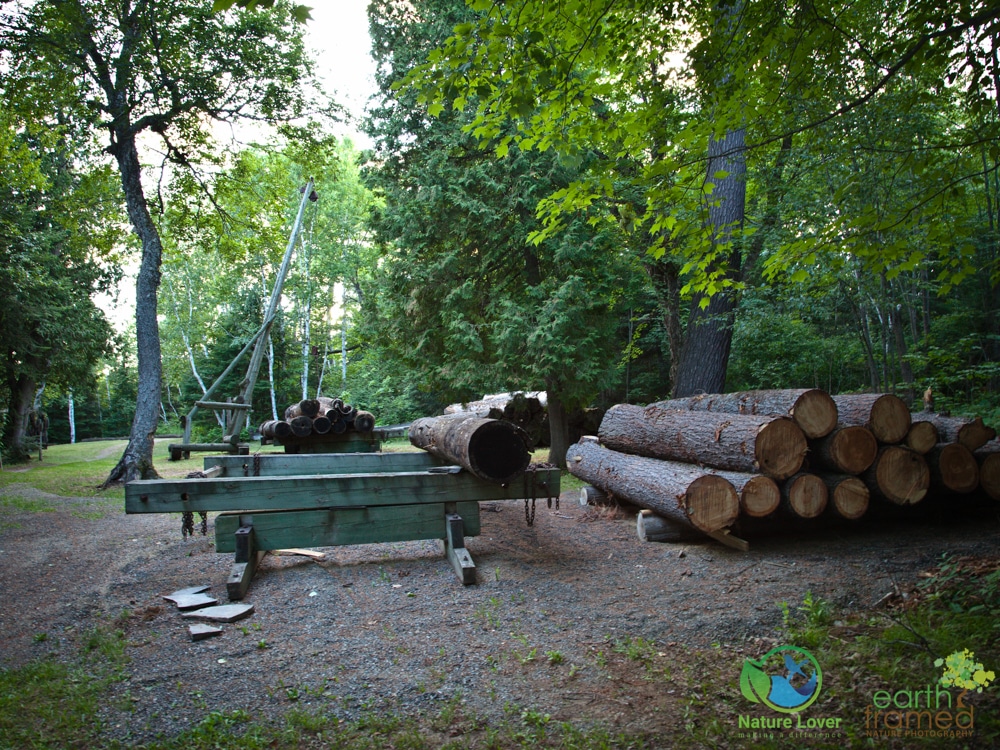
In the foreground is a log jammer and you can see the log boom in the background. The log boom is situated at the top of the hill that leads down to the Marten River.
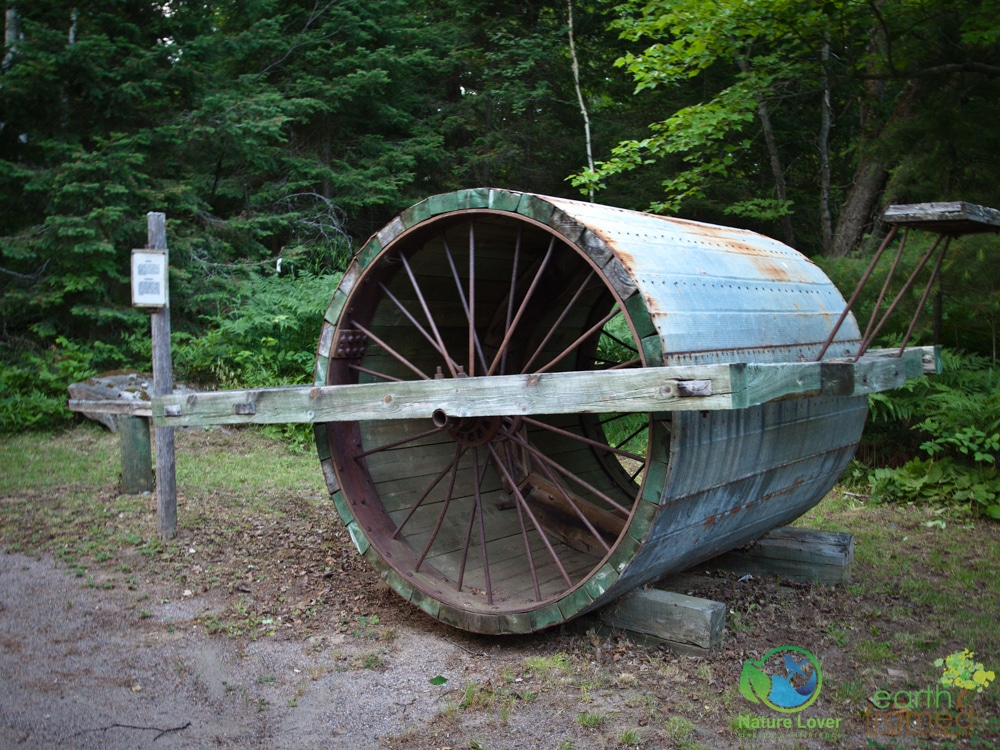
This is a roller that would have been used to compact the snow which would help it freeze thick enough to support the weight of the timber. Obviously this roller would have been pulled by horses.
This reconstructed logging camp was in really good shape and was quite interesting even without the tour. I would have liked to see the inside of the buildings and hear stories about the past. If you get to Marten River, be sure to check it out with your family.



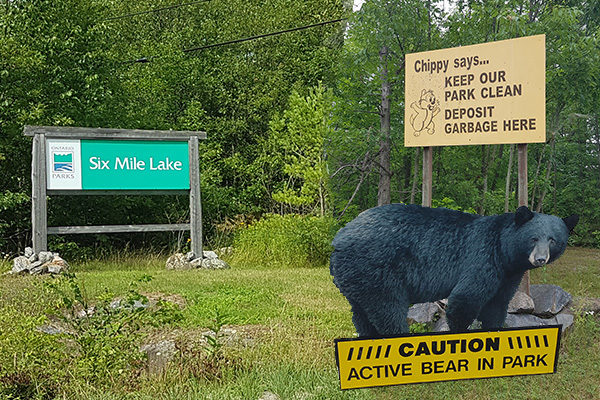
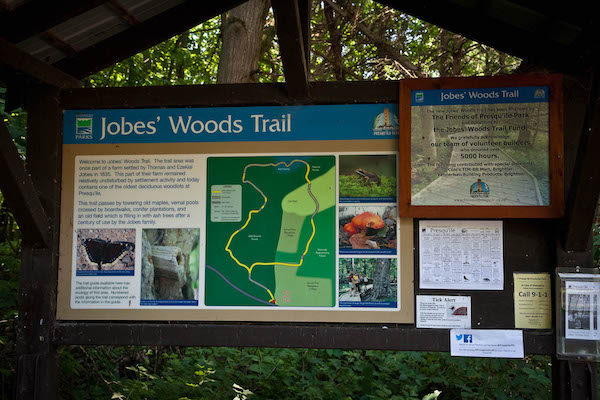
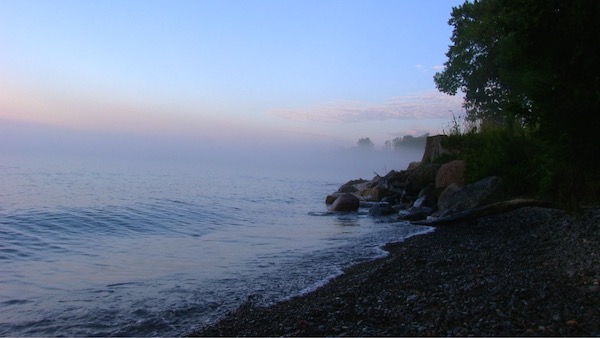
Comments(2)
JEANNETTE E says:
July 28, 2023 at 1:38 pmIS THIS THE ORIGINAL CHRISTIE LUMBER CAMP LOCATED- IF IT IS MY GRANDFATHER WORKED THERE – CAN YOU LET ME KNOW – THANK YOU
Tricia McLellan-Dath says:
August 20, 2023 at 10:57 amI’m not sure it was the Christie Lumber Camp that you are referring to. Most of the camps were temporary, or seasonal, and at the beginning of the 1900s, this area was actually the Temagami Forest Reserve (or Temagami Provincial Forest).
I did a search and only found two references to a “Christy Lumber Camp”. One was a book series by Carrie Fancett Pagels and the other was a camp near Mistinikon Lake, Matahewan, Ontario.
You could contact the park and ask them if they know anything more. Sorry I couldn’t be more helpful.